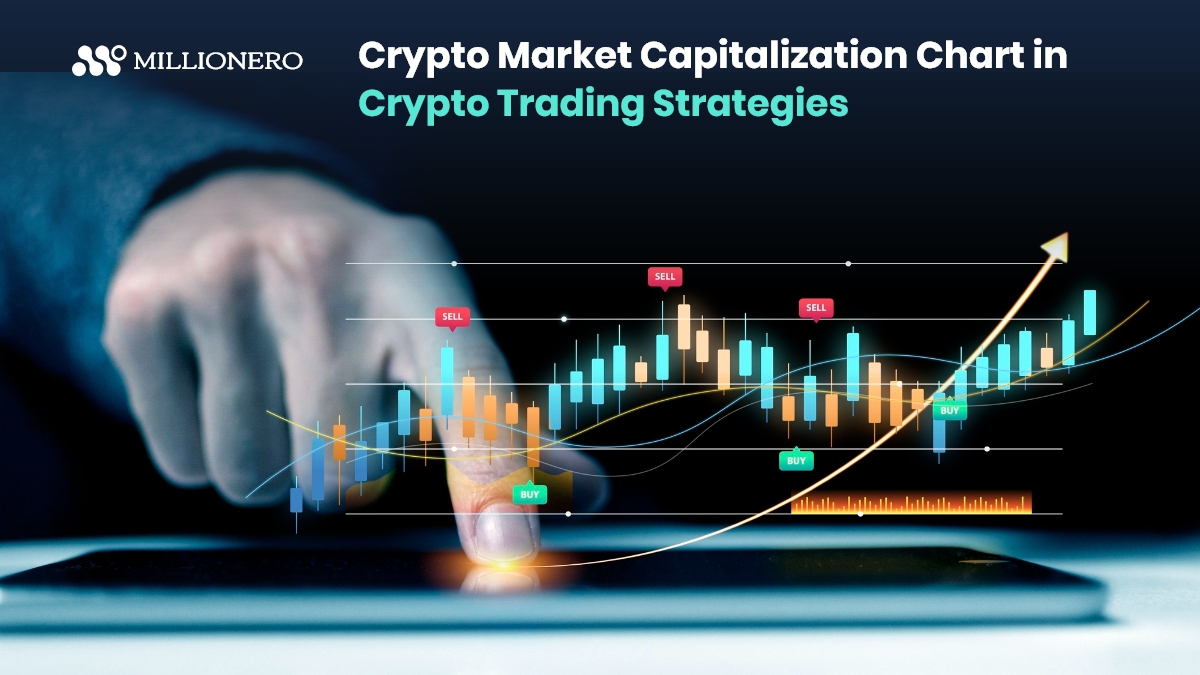
Crypto market cap is one of the most prominent metrics we evaluate to judge one particular crypto or the market in general. It is also one of the primary metrics new users learn to look at as they learn the basics of crypto trading. For the absolute newbies, though, the role of a crypto market capitalization chart in crypto trading strategies may still need some explaining. That is exactly what we are here to do.
Whether you are a newcomer to crypto or an experienced trader brushing up on the basics, here’s what a crypto market cap chart can do for your crypto trading.
What is a crypto market cap chart?
Take a look at the chart below: it is a total crypto market capitalization chart from Coingecko, tracking the entire market cap derived from 12,867 cryptocurrencies throughout a decade.


You can get similar charts for individual cryptocurrencies as well, take a look at Bitcoin’s crypto market cap chart below:


Now, this market cap metric shows the total value of a specific crypto (or the total crypto market) at a given point in time. You can calculate the market cap of a crypto by multiplying the current price per unit by the number of the same crypto coins/tokens in circulation.
A crypto market cap chart allows you to evaluate the crypto’s size and intrinsic value,
In traditional finance, market capitalization allows you to assess a company’s size, value and potential for future growth. In cryptocurrency too, this metric helps users to understand the relative size and growth potential of cryptocurrencies like BTC and ETH.
How is a crypto’s market cap calculated, and what does it say about a crypto?
Speaking of a crypto’s market capitalization chart, it is calculated using a straightforward method as mentioned above.
To make a crypto market cap chart, simply do this:
Crypto Market Cap = Current Price for a Token x Circulating Supply of the Crypto
Therefore, if a crypto has a value of $50 per token and its circulating supply is 10,000, its market cap would be $500,000.
Now, when it comes to crypto trading strategies, what does a crypto market capitalization chart tell you about a crypto, and how can that be used to plan your trades?
- A crypto’s market cap shows how popular it is at a given point in time. In the traditional world, you may have heard of the concepts of large-cap, mid-cap, and small-cap companies, and the crypto world is aligned somewhat similarly too. Knowing a crypto’s market cap and assessing its crypto market cap chart can help you sort assets based on growth potential and risk levels.
- You can compare cryptocurrencies against each other based on the market cap parameter: it gives you a standardized way to measure how big or small a crypto is in comparison to others.
- Cryptocurrencies with higher market caps (like Bitcoin has a market cap of over $1 trillion as of the end of February 2024) are generally assumed to be ones most investors prefer over others. Therefore, a crypto market cap chart can show you a crypto has grown over time and become trusted to investors.
- A crypto market capitalization chart can further indicate how liquid a cryptocurrency is and has remained over time. Cryptocurrencies with higher market caps are generally easier to buy and sell, making them an investor favorite.
- Finally, you can also assess the risk profile of a crypto by looking at its market cap chart.
Crypto trading strategies based on crypto market capitalization chart
Now, let’s get to some practical tips for utilizing crypto market capitalization charts in crypto trading strategies.
- While large caps cryptos are already established and good for medium to low risk combined with stable returns, those with smaller market caps may have good growth potential depending on their use case. This can be a potential high-risk but high-return opportunity for you.
- Large cap cryptos have a higher rate of adoption naturally, which means the risk is lower. HODL them for long-term investments.
- Create a diversified crypto portfolio and spread risk across cryptos with large market caps, medium market caps, and small market caps. However, putting more into the larger cap cryptos and less into the smaller cap cryptos would be a good idea based on both the risk factor and returns.
- Keep yourself up to date with the global crypto landscape and keep up with the crypto market cap charts for newer cryptocurrencies to identify the best trading opportunities for you.
- In small cap cryptocurrencies, the volatility would be higher, so prepare accordingly.
However, aside from these crypto trading strategies, do keep in mind that you can not make investing/ trading decisions based on just the market cap metric. Take into consideration other factors like project background, team, volume, etc. and make use of technical analysis instruments to decide which projects to invest in. This is because if you take a look at the historical crypto market capitalization chart for any asset, you will find that market caps can fluctuate based on outside factors such as sociopolitical, economic, and other events, which is not telling of a crypto’s true value.
Therefore, always take more than one metric into consideration when making trading decisions.
Trade crypto with Millionero
We hope this post has clarified crypto market capitalization charts for you! For further guidance on crypto trading strategies, don’t forget to navigate to the Millionero Magazine.
Moreover, to put those very strategies to use, Millionero is here for you. Join the family today!

